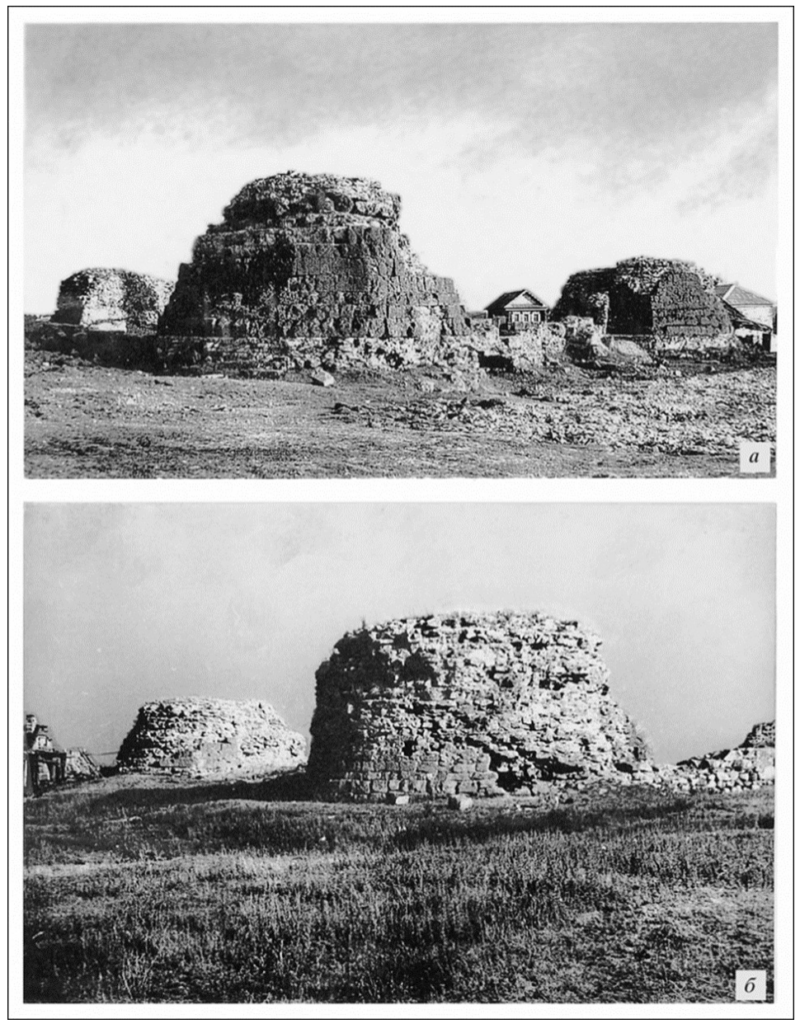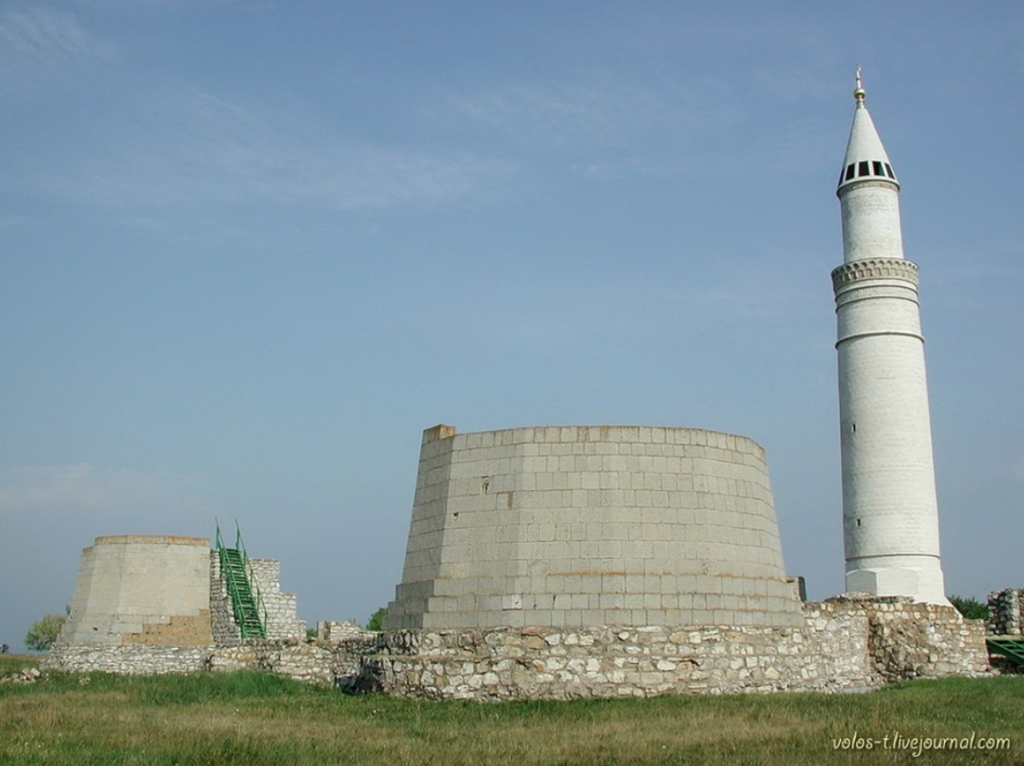Cathedral mosque with a large minaret



It was a rectangular building (32×34) with a hypostyle (multi-column) prayer hall of the Bilyar mosque type. There was a mihrab (altar niche) turned towards Mecca in its southern wall with extensive carved decoration. A small eyvan, a vaulted corridor-portal in front of the entrance, adjoined the building from the main (northern) facade. Such eyvans are widely known in the architecture of Transcaucasia, Crimea, and Seljuk Asia Minor.
Several architectural details with rich carved ornamentation have come down to us from the eyvan portal. These are blocks of framing for an arched or lancet aperture, rosettes placed in the upper part of the portal at the corners of the tympanum, and a small plate with Arabic sayings from the Quran. A high minaret, called the Big Minaret in the literature, rose to the left of the portal. Later alterations resulted in the appearance of four powerful fortress-type towers in the corners of the building, window and door openings, and niches along the facades. The architectural decor of the Cathedral Mosque, according to some remnants of details, is expressed in the framing of window and door openings, the portal arch, and the mihrab niche.
In the late XIII and early XIV centuries, the almost destroyed Cathedral Mosque was rebuilt. The new walls are laid on stronger mortar with the addition of stone chips. A new floor was laid inside.
Its final appearance with corner fortress towers was obtained after the destruction of Bulgar by Bulak-Timur’s troops in 1361. Only the bases of the towers, part of the masonry walls, and the foundation of the large minaret have survived until now. More than half of what can now be seen in its ruins – the result of restoration and reconstruction. The main symbol of Bulgar – the Great Minaret – has not survived until now.
According to Eastern Muslim medieval architectural traditions, fortress towers were present not only in large cathedral mosques, but also in caravansaries, palaces, etc. The Cathedral Mosque, built of white limestone on a hill, dominated the surrounding buildings. A wonderful view of the coast was opened up from its towers, it could be seen for tens of kilometers. It attracted the admiring gazes of foreigners sailing on ships on the Volga. The fortified temple with a 24-meter minaret served as the main mosque.
The monument has been repeatedly investigated by scientists. The last excavations were carried out by A.P. Smirnov due to the restoration of the monument in 1964–1965. In 1964–1967, the ruins of the Cathedral Mosque were subjected to conservation and fragmentary restoration within the preserved height.
Reference to the source: https://bulgar.pnzgu.ru/culture/architecture
Other publications
All publicationsSeptember 11th
Muslim architecture of Volga Bulgaria
The development of cities and urban culture in Volga Bulgaria is closely connected with the adoption of Islam, which led to a certain direction in the development of architectural and urban culture.

September 29
Big minaret
The Great Minaret is the main symbol of Bulgar.

